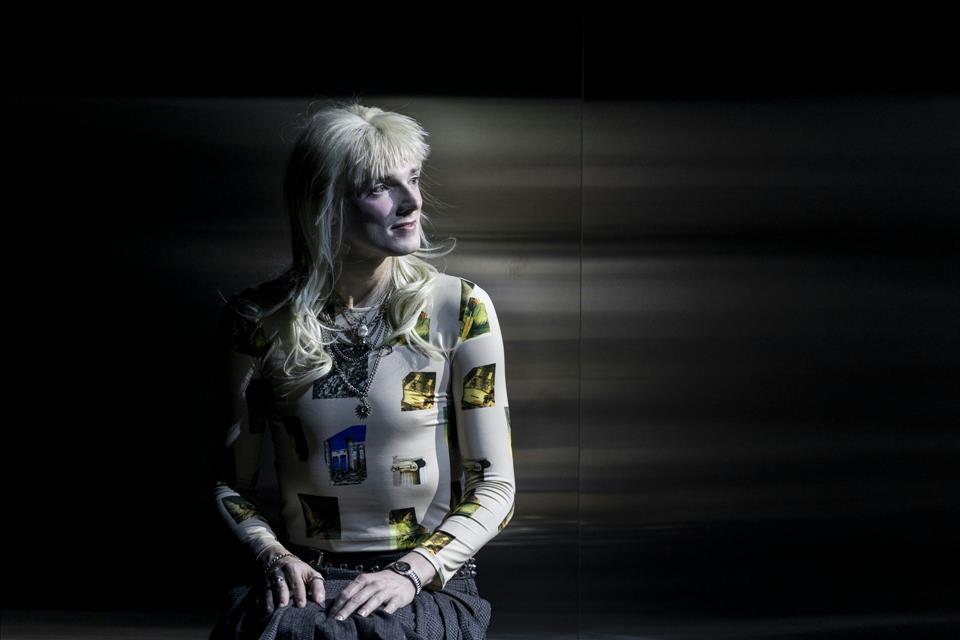
Belvoir's Orlando Is A Love Letter To The Contemporary Queer Community That Doesn't Quite Come Together
When Orlando (played by Shannen Alyce Quan, the first of four actors to take on the role), is presented to Queen Elizabeth I (Amber McMahon), she names him Lord Orlando, decreeing his life be filled with opportunity and abundance.
The opening scenes lift us up into a dream, full of possibility. When Orlando falls in love with Princess Sasha (Emily Havea), the terrible tension arises between keeping the magic of a perfect romance fixed, and the need for change – the only way for social norms to evolve.
Belvoir's Orlando is a new adaptation of Virginia Woolf's 1928 novel of the same name. In the show notes, co-writer (with Elsie Yager) and director Carissa Licciardello describes Woolf's novel as a“love letter to the queer community”.
Pulling the play on gender politics from the 1920s into the present day, Licciardello conscientiously casts Orlando with non-binary actors, making this production into a love letter to the contemporary queer community.
The production opens on skates. Brett Boardman/Belvoir Shifting genders
First published in 1928, Orlando throws gender politics into the air, employing a form of magic realism to explore gender through the centuries, from the stately Elizabethan era, to the decadent restoration, the bleak Victorian era, and into the 1920s.
In the novel, Orlando is a nobleman, born during Elizabeth I's reign over England. In an epic adventure, Orlando journeys through the centuries as a poet, working for various rulers and pursuing numerous lovers.
At the turn of the 19th century, Orlando finds they have switched from male to female, and must face the magnitude of what it means to be a woman.
The play riffs on this plot, simplifying it to a sparse core of key elements, but expanding on the gender evolution. This adaptation introduces two further changes in gender identity, first from male to female, but then to an ambiguous gender that is socially unacceptable, and finally to a non-binary gender reflected in the contemporary society.
A drifting productionLicciardello establishes tensions that drive the piece: orthodoxies and science as forces of erasure; imposing notions of perfection over the peculiarities of unique identities.
However, the principle of binary genders erasing all other possibilities is missing.
Without clearly establishing this central tenet of gender politics, the production lacks a firm problem for its protagonists to push back against.
This leaves it drifting. Where is the grand promise of Orlando's destiny? Having sailed with aplomb in part one, it takes a sharply enticing turn in part two, where Lady Orlando (played by Janet Anderson) is faced with the ridiculous games of flirtation and romance. It slumps somewhat in part three, where we are asked to adjust to a third Orlando (now played by Zarif).
The production lacks a firm problem for its protagonists to push back against. Brett Boardman/Belvoir
The transitions from one Orlando to another work perfectly well, but the character development built for us in previous sections falls away. We are faced with the experience of a new character, who we haven't invested in. Without a strong connection to the main character, the second half of the production drifts, at times even drags.
When new Orlando insists they have adventures and greatness yet to enjoy, we have no visceral experience of what they might yearn for. Our connection to Orlando has been lost in the beautifully constructed mist.
The creatively interesting decision to cast four Orlandos cuts too deeply into the audience's opportunity to engage effectively with an embodiment of androgyny.
The roaring 20sThe design elements are sumptuous throughout. The monochromatic scheme in the Elizabethan era provides the perfect backdrop for the shocking blaze of orange flames when the Great Fire of London pulls us forwards in time.
The ensemble performances are consistently strong, with a poetic flow of stage pictures and an infectious pleasure in their performances.
Emily Havea is a stand out, both as the princess Sasha and in her minor roles.
The production beautifully balances simplicity of images with complexity of ideas. A fleeting moment in the final scene brings our fourth Orlando (played by Nic Prior) back in contact with their first love, the princess Sasha.
The design elements are sumptuous throughout. Brett Boardman/Belvoir
It is moving, ghostly and full of mystery. Much of the production rises to this delicate level of magnetism.
Almost 100 years after Woolf's book, our own 20s are also roaring. The production ends in the London tube, where we are presented with a stream of queer identities, normalised such that no one is met by a stigmatising gaze.
Free to express apparently endless variations of gender identity, Orlando's journey across the centuries arrives at this wondrous time when gender ambiguity roams free.
Orlando is at Belvoir, Sydney, until September 25.

Legal Disclaimer:
MENAFN provides the
information “as is” without warranty of any kind. We do not accept
any responsibility or liability for the accuracy, content, images,
videos, licenses, completeness, legality, or reliability of the information
contained in this article. If you have any complaints or copyright
issues related to this article, kindly contact the provider above.


















Comments
No comment